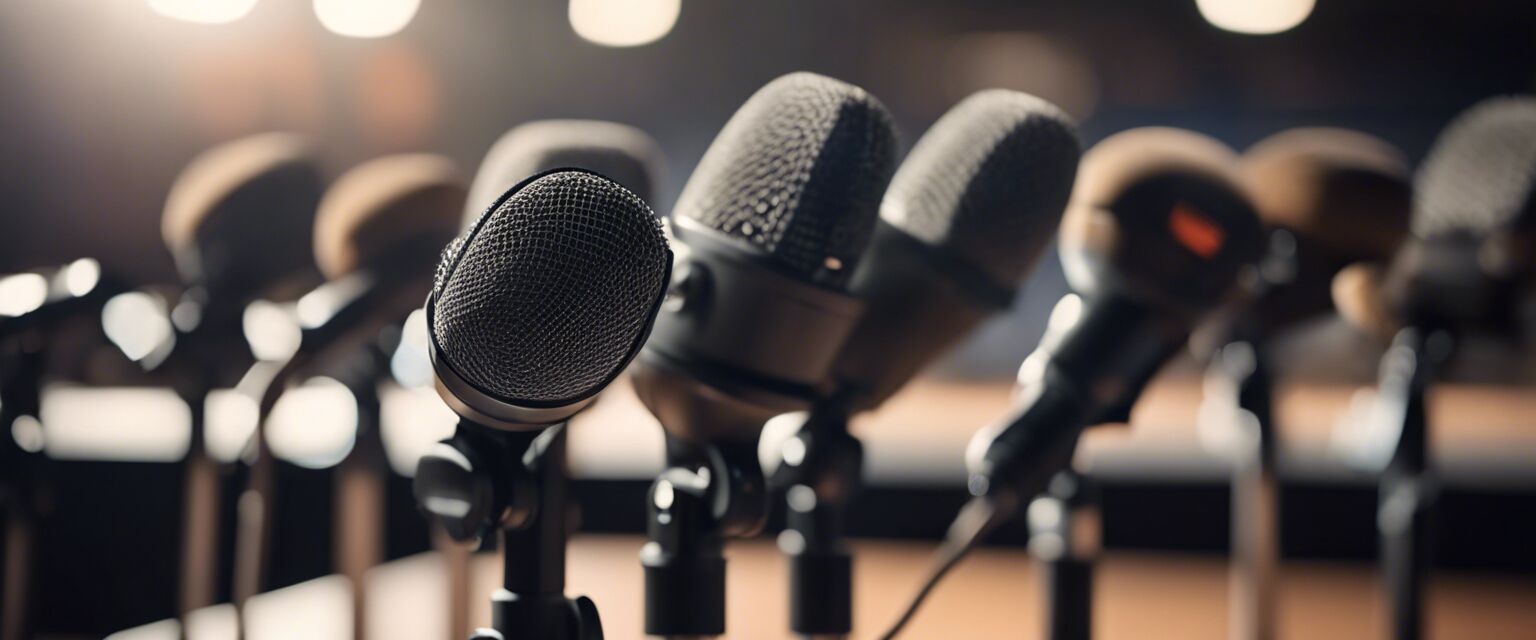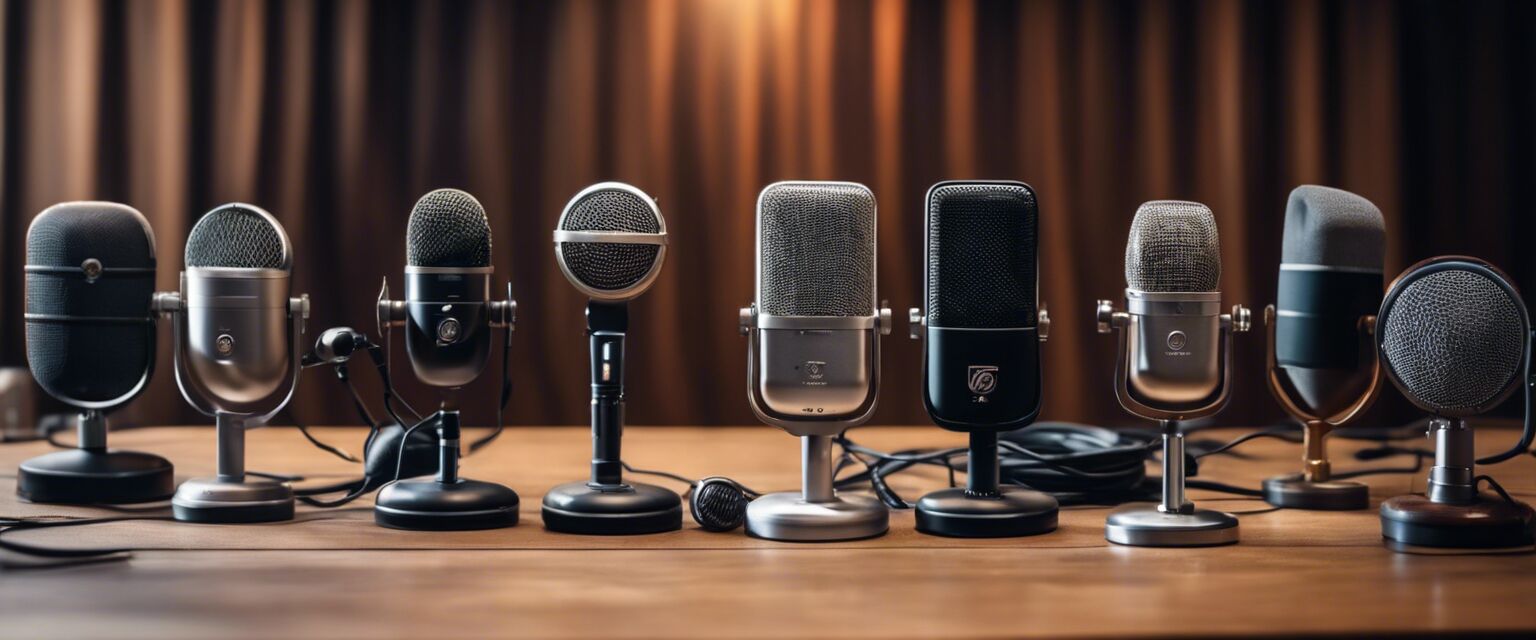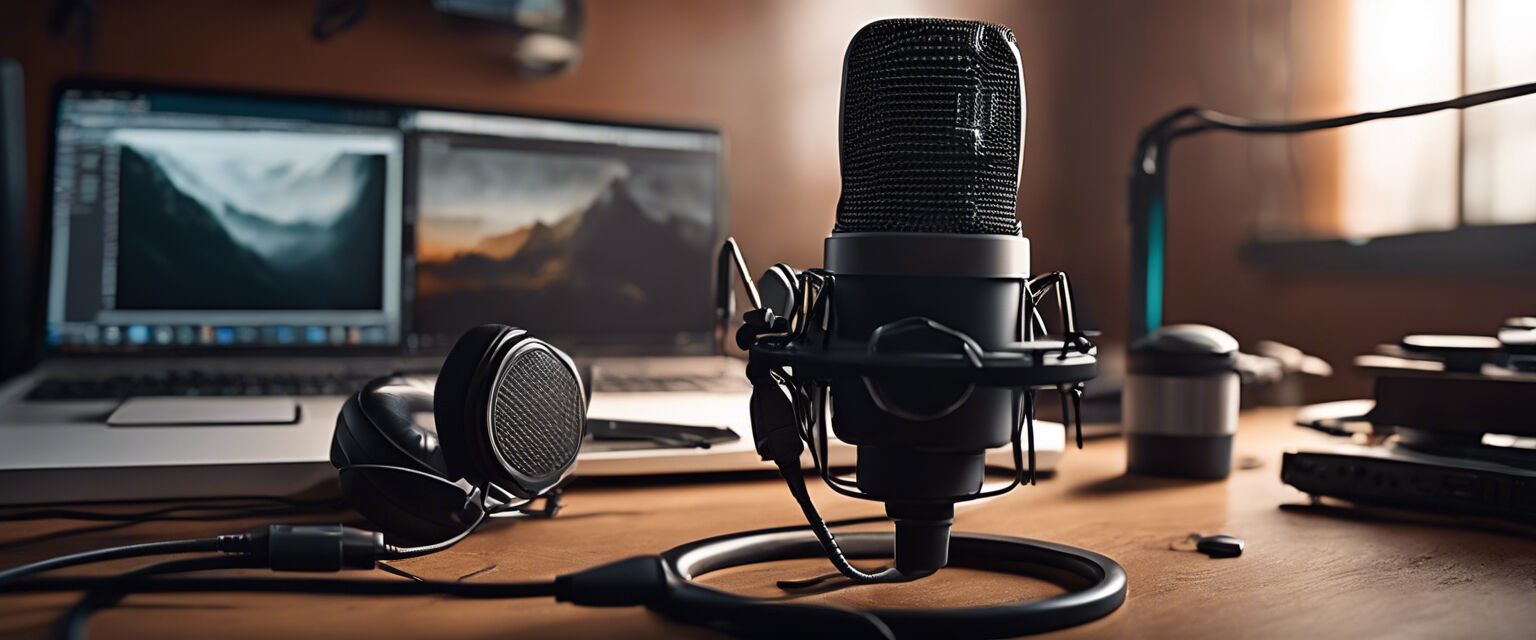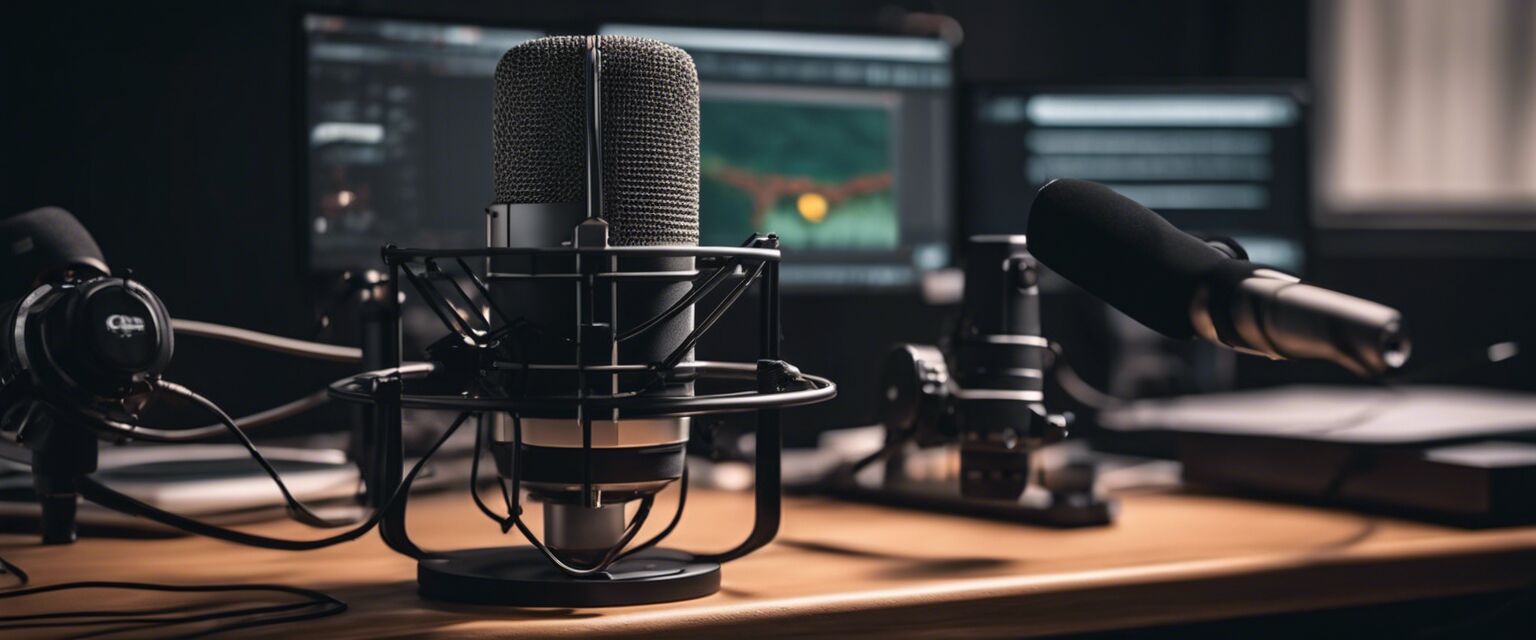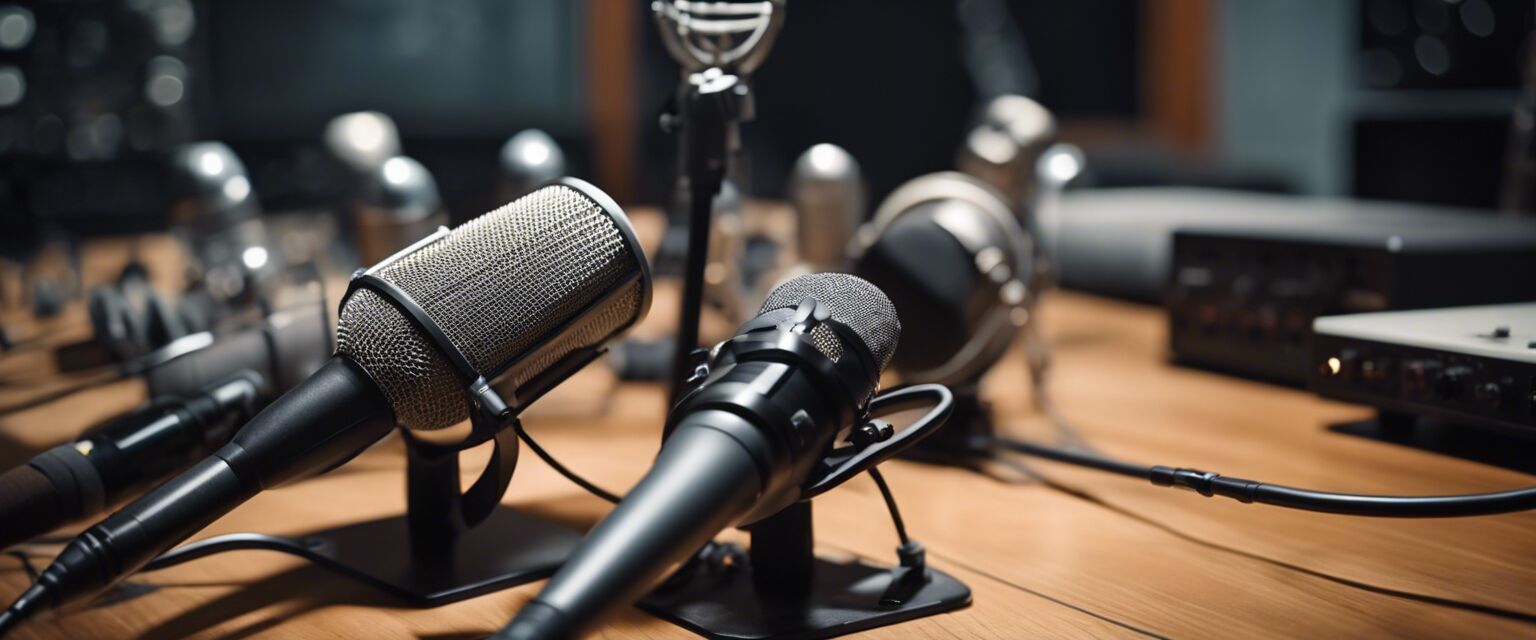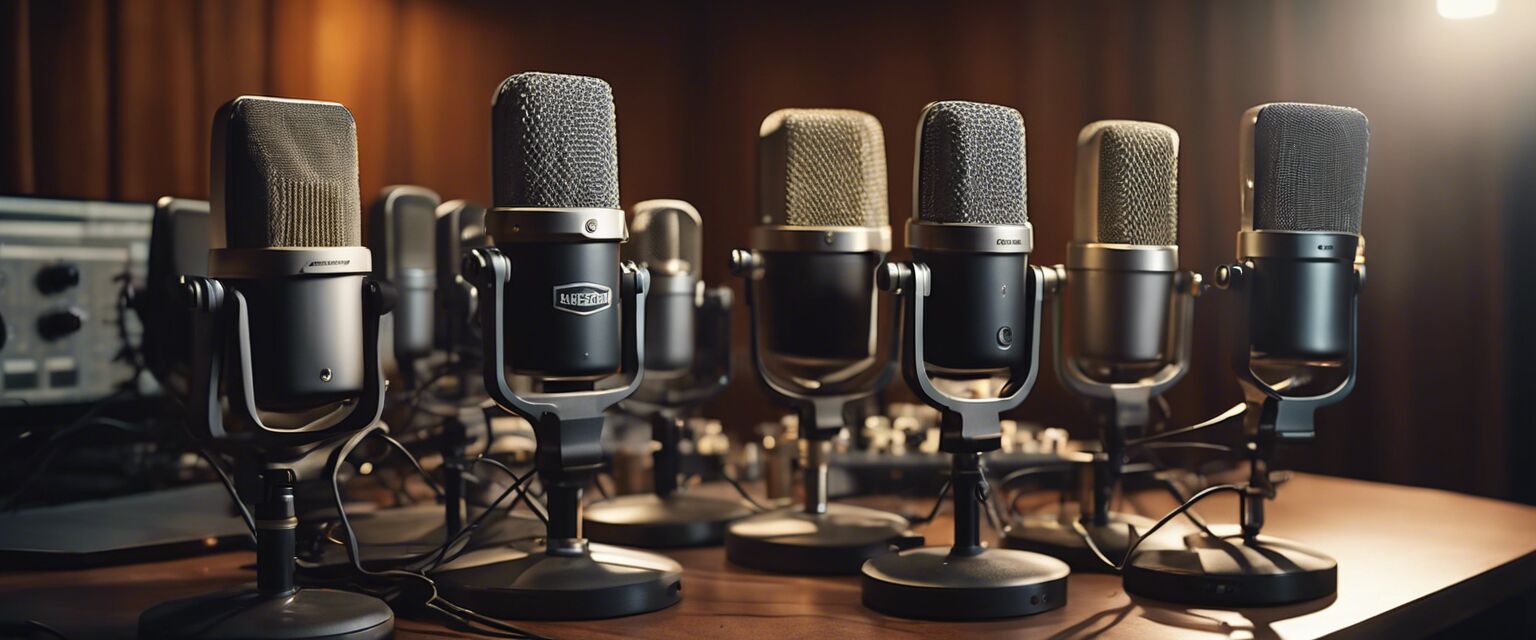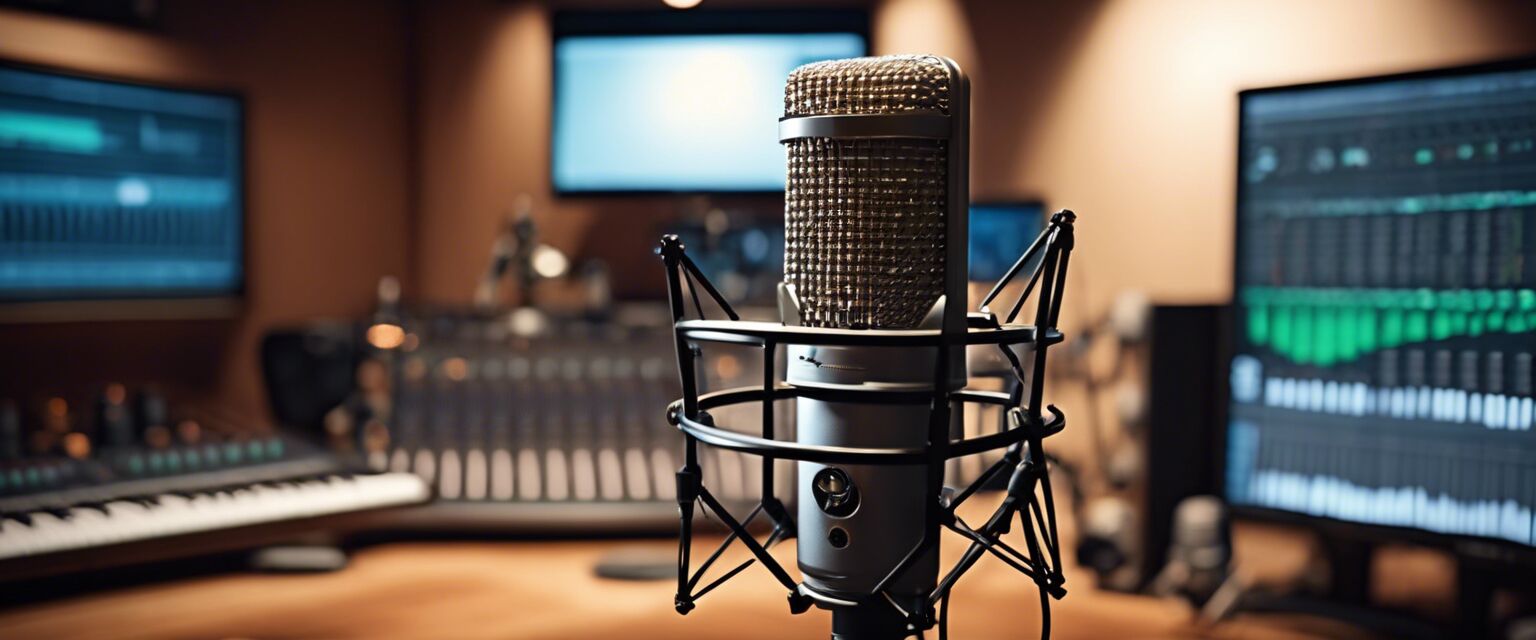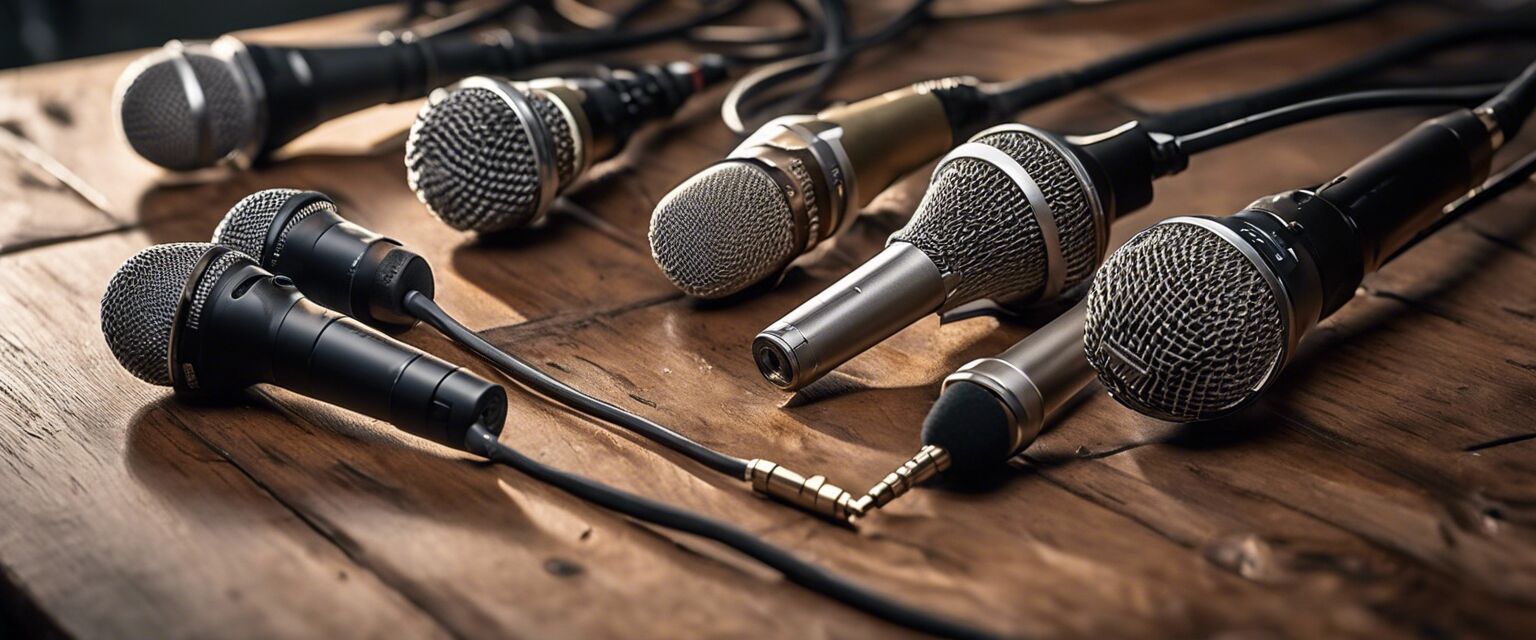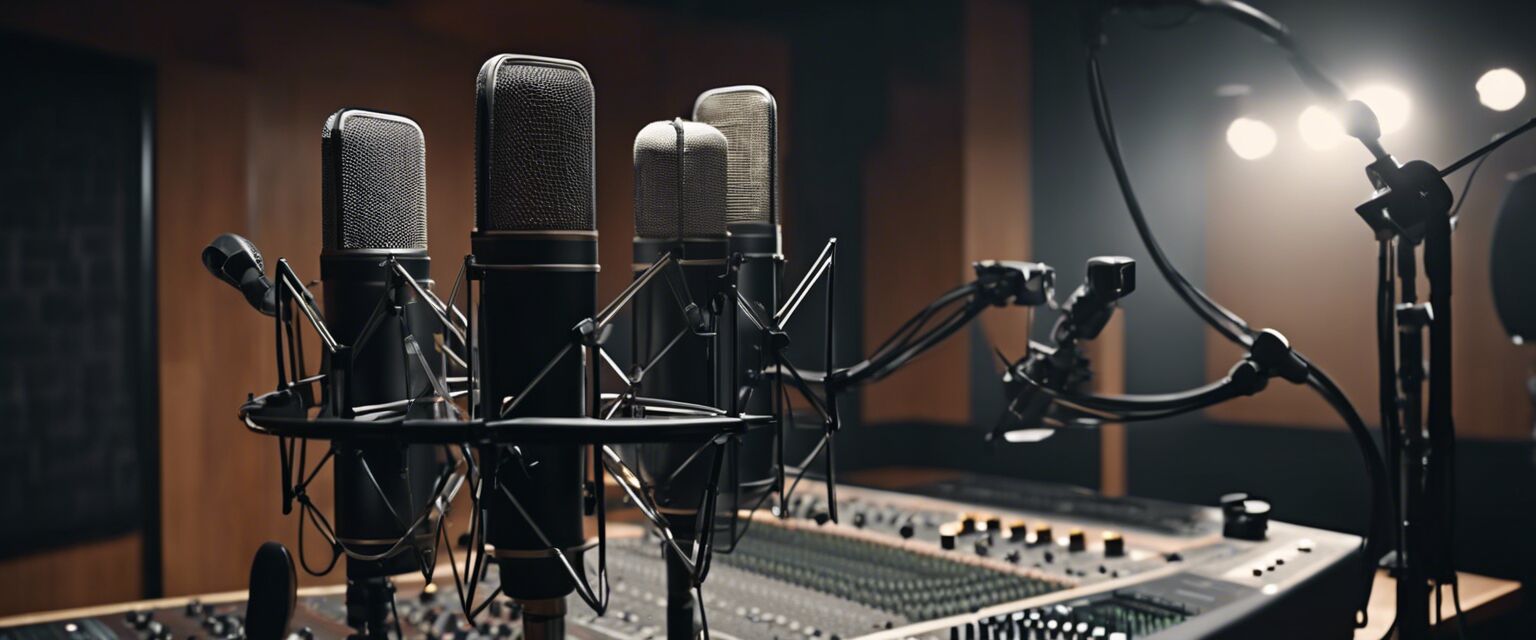
Best Studio Microphones: A Comprehensive Guide for Professional Recording
Welcome to our in-depth guide to the best studio microphones for professional recording. Whether you're a seasoned musician or an aspiring audio engineer, finding the right microphone can make all the difference in capturing high-quality sound.
Key Takeaways
- Studio microphones can be categorized into condenser, dynamic, and USB microphones, each with their unique characteristics and applications.
- When choosing a studio microphone, consider factors such as polar pattern, frequency response, and sensitivity to ensure optimal performance.
- Investing in a high-quality studio microphone can significantly improve the overall sound quality of your recordings.
Types of Studio Microphones
Studio microphones can be broadly categorized into three types: condenser, dynamic, and USB microphones. Each type has its unique characteristics, advantages, and applications.
| Type | Characteristics | Advantages | Applications |
|---|---|---|---|
| Condenser Microphones | High sensitivity, wide frequency response, and multiple polar patterns | Captures detailed and nuanced sound, ideal for vocals and acoustic instruments | Vocal recordings, acoustic instruments, and orchestral recordings |
| Dynamic Microphones | High durability, resistance to loud sounds, and unidirectional polar pattern | Handles high sound pressure levels, ideal for loud instruments and live performances | Drums, guitar amps, and live vocals |
| USB Microphones | Plug-and-play connectivity, compact design, and affordable prices | Easy to use, ideal for podcasting, voice-overs, and home recordings | Podcasting, voice-overs, and home recordings |
Factors to Consider When Choosing a Studio Microphone
When selecting a studio microphone, consider the following factors to ensure optimal performance:
- Polar Pattern: Omnidirectional, cardioid, supercardioid, or hypercardioid patterns determine the microphone's sensitivity to sound direction.
- Frequency Response: The range of frequencies the microphone can capture affects the sound quality and accuracy.
- Sensitivity: Measures the microphone's ability to pick up sound waves, with higher sensitivity microphones capturing more detail.
- Impedance: Matches the microphone's output impedance to the input impedance of the recording equipment for optimal signal transfer.
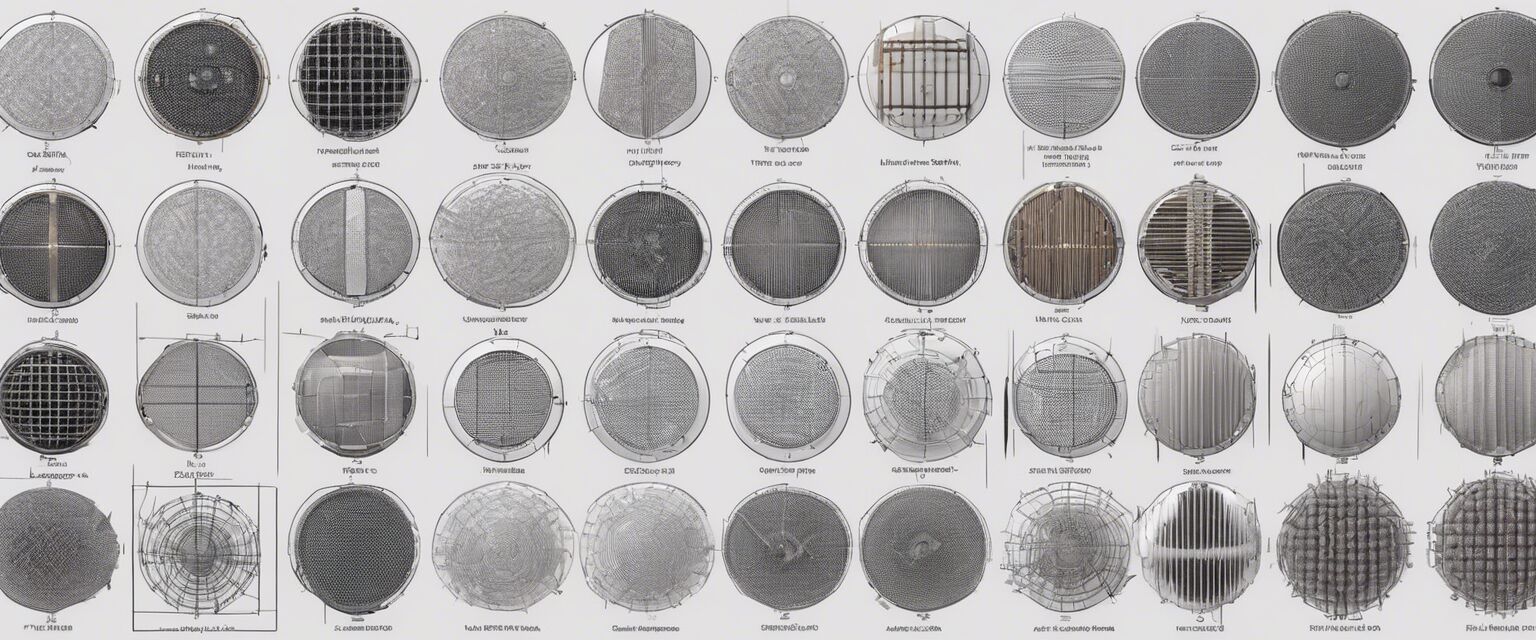
Condenser Microphones for Studio Recording
Condenser microphones are ideal for capturing detailed and nuanced sound, making them a popular choice for vocal and acoustic instrument recordings.
Explore our selection of condenser microphones to find the perfect fit for your studio recording needs.
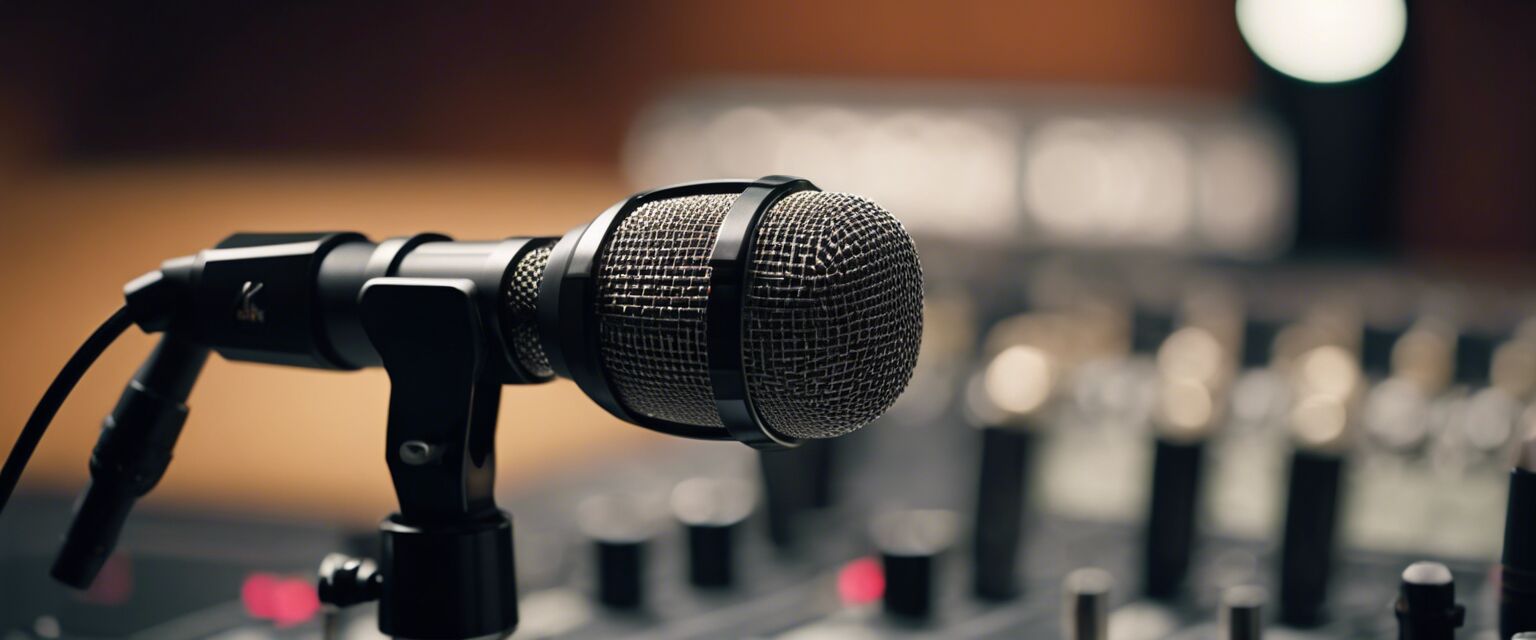
Dynamic Microphones for Live Performances
Dynamic microphones are designed to handle high sound pressure levels, making them perfect for loud instruments and live performances.
Browse our collection of dynamic microphones to find the right one for your live sound needs.
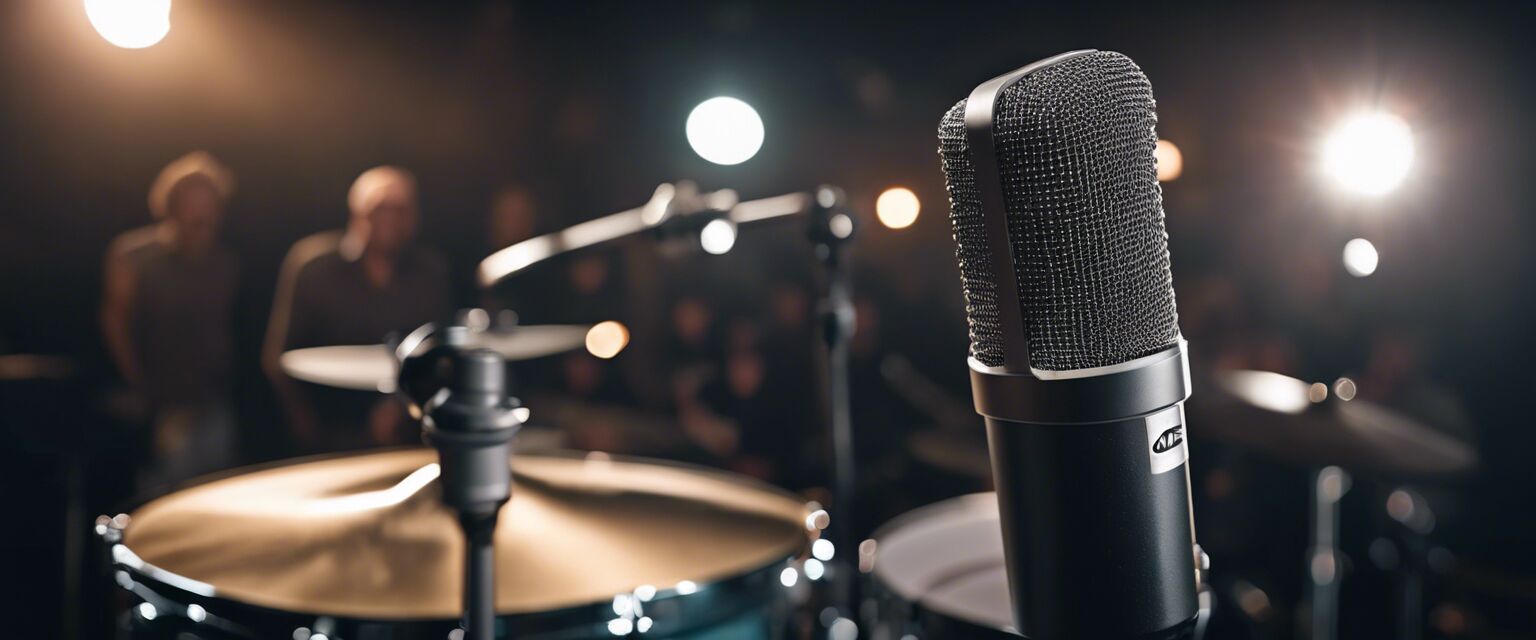
USB Microphones for Home Recordings
USB microphones offer plug-and-play connectivity and compact designs, making them ideal for podcasting, voice-overs, and home recordings.
Check out our selection of USB microphones for easy and convenient recording.
Pros
- High-quality sound capture
- Versatile applications
- Durable and long-lasting
Cons
- Requires additional equipment for connection
- May require additional setup and configuration
Conclusion
Choosing the right studio microphone can make a significant difference in the quality of your recordings. By understanding the different types of microphones and factors to consider, you can find the perfect fit for your studio recording needs.
Remember to explore our selection of studio microphones to find the ideal microphone for your next recording project.
Beginners Section
- Start with a budget-friendly USB microphone for home recordings.
- Experiment with different polar patterns and microphone placements to find the optimal sound.
- Invest in a high-quality microphone for professional recordings.
